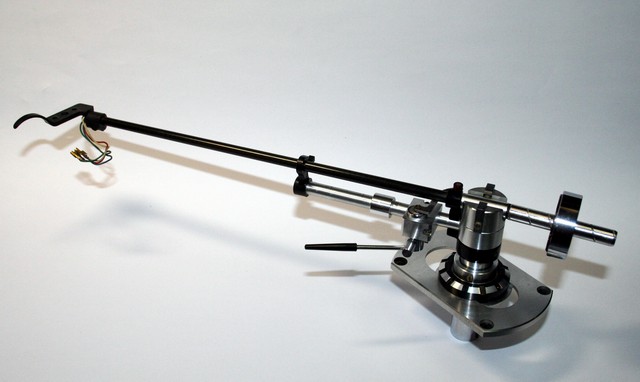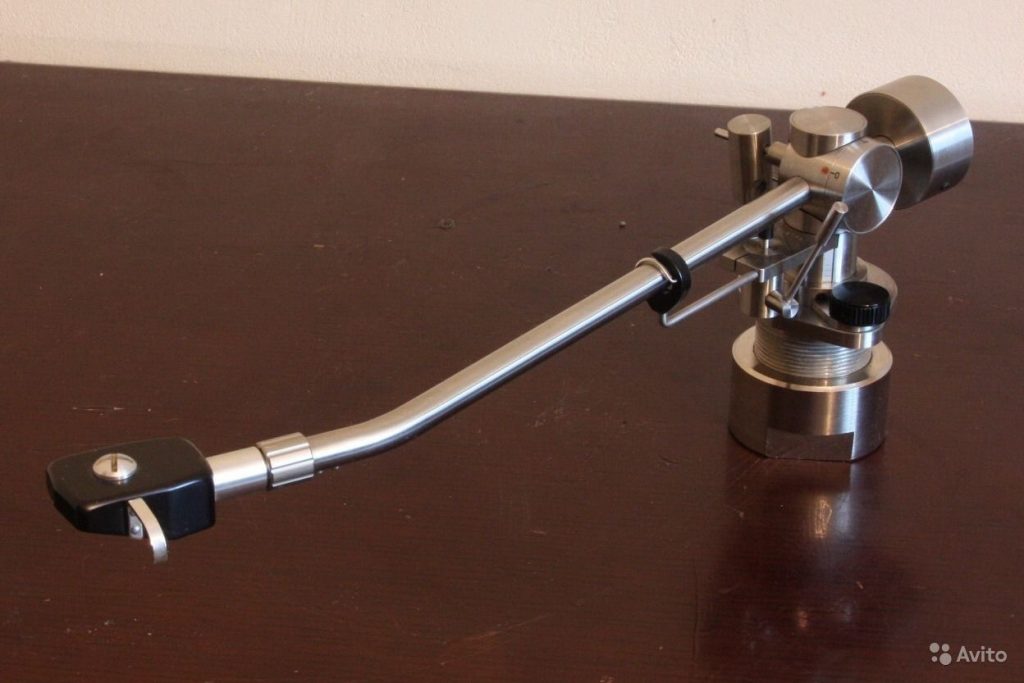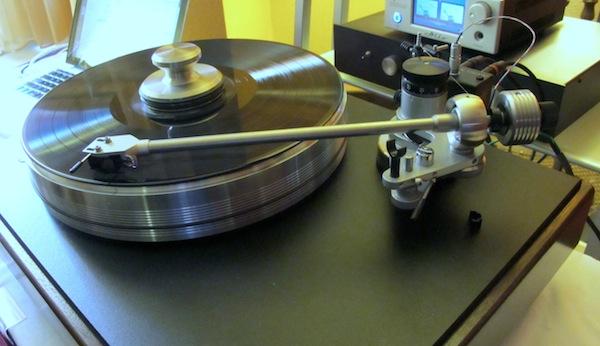I know this sounds complicated, but your turntable decision is ideally based on your choice of phono cartridge, which in turn is based on your speaker selection, which is completely based on your room acoustics. At least this is the case when you start going for audiophile quality sound. That’s why when I’m asked, “What’s the best turntable for my budget?” my answer is always, “That depends”. It’s impossible to take any portion of a high-end audio system out of context and make recommendations. Optimizing for many variables then matching components is the path to audio nirvana. The most fixed variable is typically the room. So that, along with musical taste, are usually the starting points.
My room on Maui is a perfect example, where I have a very tight space combined with limited options for speaker/listener placement. Therefore, room acoustics are my biggest limiting factor. I’ve tried and simply can’t get planer loudspeakers like Maggie’s to work. And I never will short of renovating to add more room and therefore more options, which I plan to do.
On the other hand, my Kef 104/2s (The Venerable Kef 104/2) are awesome for my room on Maui. This is especially true once I figured out to pull them a few inches further into the room to avoid the reinforcement of the frequency associated with the depth of the room and not to toe them in… at all. But my Kef 104/2s likely wouldn’t sound as good in my room in Canada, which has very different dimensions and surfaces.
My listening room in Canada is not only larger, but is also far more flexible in regard to speaker/listener positions. After a great deal of positioning and experimentation, my Magnepan (Maggie) MG-12s perform all the magic they are supposed to, though they are the largest Maggies I can fit without room acoustics having a detrimental effect (In a nutshell, the big Maggies (3.7Rs) are a fantastic speaker, but are very dependent upon room acoustics). So I know by now you’re probably thinking, “But I asked about turntables, why go on about speakers?” I’m getting there.
So the reason you need to discover what speakers work best with your room acoustics and music tastes before you can choose a turntable is due to phono cartridge selection. The loudspeakers and the phono cartridge are the two main transducers in an analog signal path (It’s all about reducing mass for the transducers) and as such, they need to be matched to each other as much as possible.
Moving coil phono cartridges, for example, have some inherent characteristics that will show themselves on nearly all loudspeakers, but they really shine when mated with similarly low-mass speaker designs such as planars. Conversely, cone and/or box speakers might like a moving magnet phono cartridge better. Or… a better way of thinking of it is the incredibly fast transient response offered by a high-end moving coil phono cartridge may be lost on a high-mass speaker design that simply can’t keep up, so why add the extra expense (especially when you factor in the cost of a pre-preamplifier or step up transformers).
So by now you probably figure I’ve moved on from describing loudspeakers to describing phono cartridges, but still not answering the question about turntables. Here’s why. Some phono cartridges are very picky about what kind of tonearm you run them in. The Denon 103R is perhaps the most demanding phono cartridge in that regard and absolutely requires a very low compliance tonearm in order to perform properly. So what’s tonearm compliance, you may ask?
Think of it like the chassis of a car. If you have a very stiff suspension (and the cantilever of the Denon 103 is very stiff indeed) and a very light chassis the springs are going to push the chassis around when the wheels hit bumps and the car will get thrown all over the place. That’s exactly what happens when you put a Denon 103R (or any other phono cartridge that requires a low compliance tonearm) into a low mass (i.e. high compliance) tonearm… it throws it around, big time. So much so you may be lucky if the needle even tracks the groove at all. Even if it does it will sound terrible. Conversely a low compliance tonearm will push a high compliance phono cartridge stylus around, having the same negative effect.
So I’m finally getting to turntable selection. You want to determine what phono cartridge you are running before selecting a tonearm (and turntables typically come with tonearms) or risk a major compliance mis-match. Of course, you could first select your tonearm from the high-end ones that are sold separately then choose your turntable based on your tonearm selection, which many audiophiles do. But if you’re already that far down the rabbit hole I’m likely preaching to the choir.
Now that you know whether you are looking for a turntable with a high compliance or low compliance tonearm, how do you shop for what you’re after. Unfortunately, even amongst the high end offerings, very few present day turntable manufactures specify it. But here’s where common sense can prevail. If it looks massive and therefore designed for low compliance phono cartridges, it probably is. Conversely if it looks low mass and obviously designed for high compliance phono cartridges, it probably is. And… if it looks light only because it is cheaply made with no consideration for phono cartridge compliance what-so-ever, it probably is.
Unfortunately. modern turntables with retail price tags under $1k mostly fall into this last category. Don’t get me wrong, the vinyl revival is a beautiful, exciting movement. But I’ve come to realize that it’s genesis is not due to a demand for quality, but rather due to far more insidious motivations on the part of the music industry (The new (old) gear coming out). To that end, there will be a barrage of turntable offerings that have little to do with sound quality and far more to do with selling records again.
So what is one to do?… Well, modern day, audiophile quality turntables start at around $5k and for that amount you can find several viable options. Even in that arena many turntables are missing the essential tonearm compliance mark. They build quality turntables that get bigger as they get more expensive. To that end, one may pay far more for a bigger turntable that has a 12 inch tonearm vs. a 9 inch tonearm, only to have spent more for inferior performance with their selected phono cartridge. I honestly don’t know how this can be lost on the modern day audiophile world, but it often is.
Or one can go vintage, back to a time when phono cartridge compliance was accounted for, resulting in several offerings, a good example is the Infinity Black Widow tonearm for high compliance.

Or if looking for a low compliance tonearm one could shop for the likes of a Fidelity Research FR-66S.

That said, it’s pretty easy to eye up the offerings of vintage turntables and judge by the design and size of the tonearm which camp it’s in. Most turntable manufacturers of that era (The “golden age” (of vinyl)) went one direction or another and it’s immediately apparent.
Oh yeah… then there’s the question of direct drive or belt drive turntables. That’s another can of worms, covered in this post:

